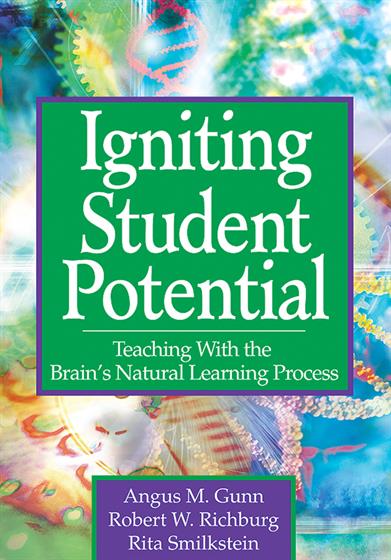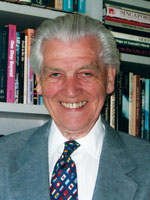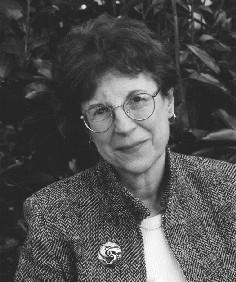Acknowledgments
About the Authors
Part I: Research and Theory
1. Why This book? Why Now?
The Moral of the Maginot Line
Are Our Educational “Guns” Facing in the Wrong Direction?
A Bloated Curriculum
A Testing Obsession
Cultivating the Latent Ability of Every Student
Life-Altering Teachers
The Classroom as a Community
Understanding Is a Key to Hope
A Playful Classroom
References
2. How Learning Happens: The Natural Human Learning Process
Students Know How to Learn; They Are Natural Learners
Trying to Find the Way
Research on the Natural Human Learning Process (NHLP)
Using the Missing Link in Math Education
If All Students Learn the Same Way, Why Are Students’ Fates Different?
A Person’s Fate: Nature or Nuture?
Helping Students See Their Potential: Students’ Self-Understanding
The Benefits of the NHLP and Metacognitive Knowledge
All Students Have an Innate Potential and Motivation to Learn
The NHLP Pedagogy
Notes
References
3. How the Brain Learns: Research and Application
The Seven Magic Words
Metacognition: Basic Facts about How the Brain Learns that Everyone Should Know
Motivation
Creativity
Emotions and the Brain: Fight or Flight
Constructivism
Reasons Students Are Not Motivated In School
Plasticity (Neuroplasticity)
No-Fail First-Stage Learning Tasks
Examples of No-Fail First-Stage Learning Tasks
Things That Can Make It Go Wrong
Feeding the Brain
Opportunities to Fulfill Their Potential
Notes
References
Part II: Classroom Applications
4. How Tall Am I? Real-world Math for Early Learners
Transition from Home to School
Creating a Brain-Friendly Environment
The Nature of Math
Math Content for Early Grades
Numbers
Measurement
Geometry
Games
Multiple Intelligences and Student Potential
Exploring Outside the Classroom
Evaluation
References
5. Can You Build an Igloo? Understanding the Past with Elementary Learners
Discovering the Past
Beginning the Unit
Examining a Distant Place
Inuit Society Today
References
6. Where Would You Locate Your Castle? Developing Potential in Early Adolescent Learners
What are the Relatively Normal Physical Changes That Occur With the Beginning of Puberty?
How Then Would We Teach?
Justin’s Teacher
Building Relationships – The Key to Early Adolescents
Enriched Environments
Boredom Reduces the Adolescent Brain
The Importance of Play
The Opposite of Play is Stress
Active Learning and Problem Solving
Connected Learning
Social Learning
The Importance of Emotion
Where Would You Put Your Castle? A Potential Igniting Teaching Unit
An Acronym to Help Us Remember These Strategies
The Early Adolescent Needs a Uniquely Skilled, Compassionate Teacher
References
7. What Keeps Satellites Above Earth? Scientific Investigations for Teenage Learners
Teenage Intellectual Abilities
Learning to Use Scientific Methods
Coral Atolls
Pendulum Clocks
Gravity
Satellites
Relativity
References
Part III: Teacher Skills
8. Learning Communities: Falling Empire and Rising Democracy
Learning Communities
A Falling Empire
Models of Learning Communities
Student Feedback
The “Ask Them” Method for Assessment and Engaged Learning
Using “Ask Them” For Assessment in a Coordinated-Studies Learning
Community: “The Fall of Empires”
Side Benefits
Pitfalls and Trouble-Shooting
Making a First Connection
Igniting Student Potential
Notes
References
9. Assessment Strategies that Promote Learning and Ignite Student Potential
Instructional Sequence: Case 1
Instructional Sequence: Case 2
What Are the Differences Between Juan’s and Mary’s Approaches to Assessment?
Informal Feedback
Making Certain We Are Measuring What Our Students Are Learning
Test Considerations vs. Projects
References
Appendix A: Interest Inventory
Appendix B: Eporue Map
Appendix C: Juan’s Classroom
Appendix D: Using Juan’s Interest Inventory to Show Group Attitude Change
10. Developing Teachers Who Inspire Their Students
What is Different About Instruction That Allows the Brain to Learn in its Most Natural Way?
Why Does This Approach Work?
How Do Teacher Skills Differ in Problem-Solving Instruction?
A Model Preservice Teacher Training Program: Training Teachers to Teach with the Brain’s Natural Way of Learning
Candidate Selection Process
Program Structure
The Teacher Education Classroom as a Laboratory
Student Teaching
A More Effective Approach to the Preservice Education of Teachers
The On-going Professional Development of Teachers
If the Resources Were Available, What Would a Model Professional- Development Program Look Like?
Lesson Study: Another Professional Development Strategy
Educare
Conclusion
References
Index




